Fishing Pink Rubber Worms for Steelhead 3
The 2012-2013 Steelhead season has, as we’ve discussed on “The Outdoor Line”, shaped up to be a big fish year. Both hatchery fish and natives alike have made more than one fisherman perform a double take because of their eye-poppin’ size.
Check out some of the mondo steelhead we’ve taken time to post up in our “Heavy Metal 2013” photo album over in the Outdoor Line fishing forums. These are just some of the big fish we’ve been exposed to via friends and followers of show.
Without a doubt, it’s been impressive thus far. The exciting thing is we are actually now on the door-step the time when a good number of our large, and I mean LARGE, native steelhead enter our rivers.
On some of our favorite rivers some sections are regulated “artificial lure” only, which means no bait. On other rivers it just makes sense to use certain artificial lures because they flat out work.
One choice that many anglers seem to be drawn to is the well-respected “Pink Worm”, or Count Wormula as Endsley likes to call it. The rubber worm for steelhead has been proven time and time again and for good reason.Big steelhead love the worm!
When most anglers think about fishing a soft plastic worm the first thing they try to figure out is how? “How do I rig it or even more-so, how do I fish it”? Well, here are a few simple options to give you some things to think about.
The first thing to understand is that “not all worms are created equal”. To be more specific, some float, some do not. Some are actually considered neutrally buoyant. They also come in several sizes lke 3 inch, 4 inch, 5 inch, and even 6″ worms are common. Also, pick a color, any color or even multiple colors. Lastly, what kind of tail do you prefer? Straight, paddle, curly…I think you get the point. As you stand in the isle at your favorite tackle distributor take some time, read the package, and if all else fails ask for help.
Now that you have your worms selected lets take a look at “How-to-Rig”. One of the easiest ways to present a worm is to simply drift fish it. You have a choice, worms that float or at a minimum are neutrally buoyant. You’ll definitely want to run a neutrally bouyant worm with a corky or cheater on your leader to give it some floatation. You can also put one on with your buoyant worms as well for more color, but it’s not necessary for buoyancy.
You’ll want to use a long needle or a worm/bait threader to pull your pre-tied leader through the worm. You want to start a few inches from the tail and thread the worm onto the needle all the way through to the top. Placing a good plastic or glass bead down the leader on top of the hook, helps prevent the hook from being pulled into the worm and tearing it. You can also use something called a sequin. Sequins are those reflective do-dads used in costumes and found at most craft stores. These are actually a great choice as well.
This rig works great for drift fishing; however my favorite method for my worms rigged in this manner is “float dogging”. Of course I’ll run it with my stick lead and the only change I am making is to use an artificial lure vs. bait like I normally do. One thing to keep in mind, you’ll want to run an 18″ to 20″ leader so as to keep your buoyant worm down in the strike zone.
![31105reduc005[1]](http://www.theoutdoorline.com/blog/wp-content/uploads/2013/02/31105reduc0051.jpg) Here is another option and in my opinion the easiest way to rig a worm. If you can tie a leader on under a float, then you are 3/4ths of the way there.
Here is another option and in my opinion the easiest way to rig a worm. If you can tie a leader on under a float, then you are 3/4ths of the way there.
I usually go with a 2 foot or 3 foot leader tied to a size 1 hook. This presentation works best with 3 inch worms and usually no larger than 4 inch. Place just a few split-shot on your leader to get it down under the float a bit faster and your leader is ready. Simply hang the worm on the hook at about the mid-way point, and your set. This is known as “whacky style”.
It can be flat-out deadly and I’ll fish this in most areas where I would also fish a jig. It’s a great way to present a worm suspended and creep it along structure, such as wood. I also like the fact that if I want to change out to a different color or style, it doesn’t get much easier. Remember that a buoyant worm isn’t necessary, as we want to make sure the worm is suspended under the float.
Similar to the wacky style and also fished under a float, is an inverted presentation. You have a couple options. Buoyant worms can be fished with a bullet sinker on a bead on top of the hook. Using the bait threader, this time you slide the worm on from the top first and only go about 1/3 of the way through. At this point you want to push the needle out through the side. As you thread this worm onto the leader, the leader will come out the side, allowing the worm to bend over and create a lot of movement when hanging upside-down.
If you use a non-buoyant or neutral buoyant worm, you can add a few split shot to the leader, again to get it down under the float. These also fish very well in water ideal for jigs.
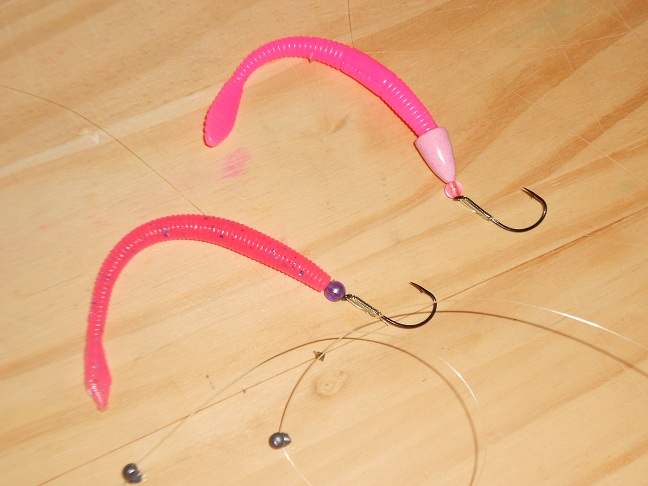 “Got jig heads”? Yep, just that simple…. put a 2 inch or 3 inch worm on a jig head, suspend it under a float, and you are fishing a pink worm. Don’t be afraid to use these little guys to dress up some of your big steelhead jigs, as well. If you are looking for a big profile with a lot of action this just might be your ticket.
“Got jig heads”? Yep, just that simple…. put a 2 inch or 3 inch worm on a jig head, suspend it under a float, and you are fishing a pink worm. Don’t be afraid to use these little guys to dress up some of your big steelhead jigs, as well. If you are looking for a big profile with a lot of action this just might be your ticket.
As my buddy “William” has been quoted in saying, many, many times…..”What isn’t tried won’t work”.
All I know is that several years ago I rigged a pink worm on a leader, with a series of beads and a Spin-n-Glo. My intention was to fish it on a bait diver. The first time I did this I was in a buddy’s boat. He put out a plug, I put out my worm and bait diver. In about 3 or 4 minutes we had a violent take down, and it wasn’t on the plug. I grabbed the rod, put a little pressure to it and POW….. the fish was gone. I reeled in and brought back my bait diver and half of the 5′ to 6′ leader. I could tell I must of had a nick or a knot or some defect that caused the leader to break.
The bottom line is that it worked and it worked well. I will use it on occasion when the conditions are right. You fish it as you would a plug. I rig the worm so as to increase the action. Again, using the bait threader I start a few inches from the bottom. Threading up towards the top and pop the needle out about an inch from the end. This little end of worm pointing slightly down below the beads and Spin-n-Glo actually act like a bit of a rudder in the water and creates additional movement on the worm. You are basically backing this crazy moving worm down right at the fish on a 5 foot to 6 foot leader. This particular rig is a little more involved but it can work very well.
There ya go, a number of choices and options on how to rig and fish a pink rubber worm in hopes of banging a huge wild steelhead this spring. There is still plenty of winter-run season left. Go get yourself some worms, get them rigged up, and go out a catch a big chrome nate. Just make sure you send us a picture of that “Heavy Metal Monster” here on our FORUMS page, under “Fish Reports“. Or feel free to post it up on the Outdoor Line Facebook page.
Good steelhead fishing to you!
Duane Inglin
The Outdoor Line
710 ESPN Seattle
www.theoutdoorline.com


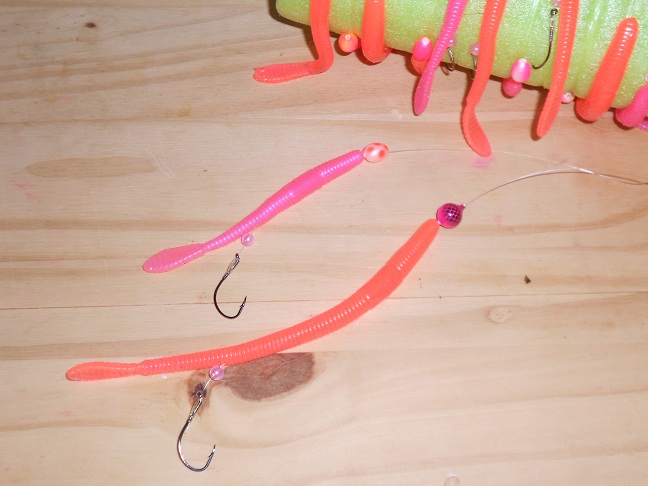
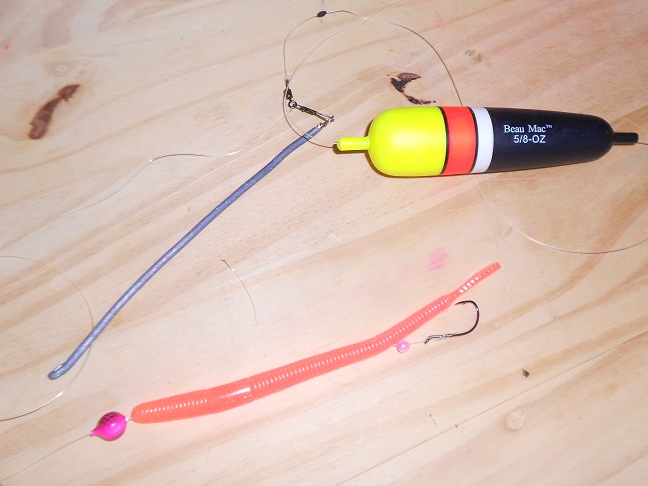
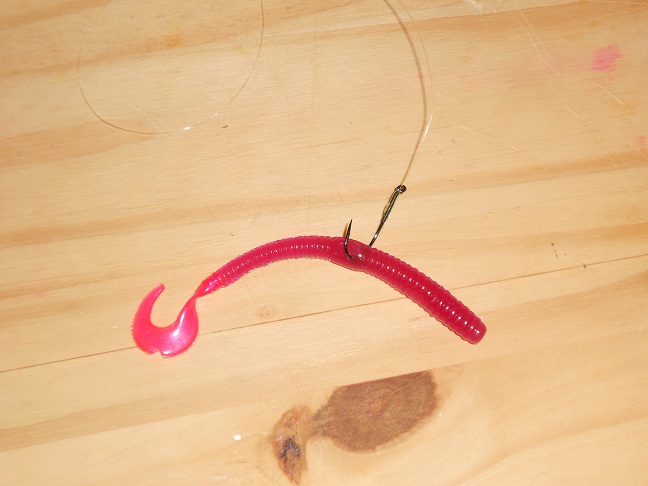
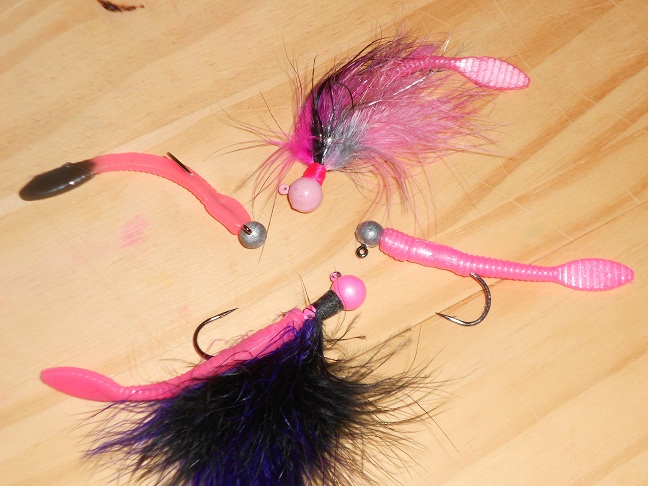
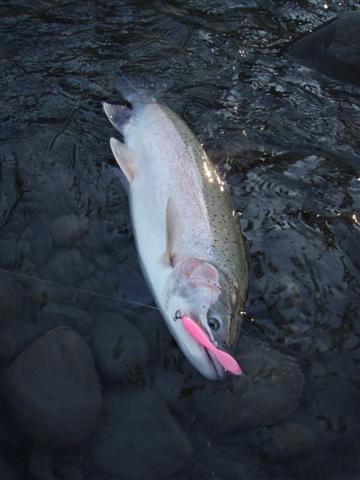
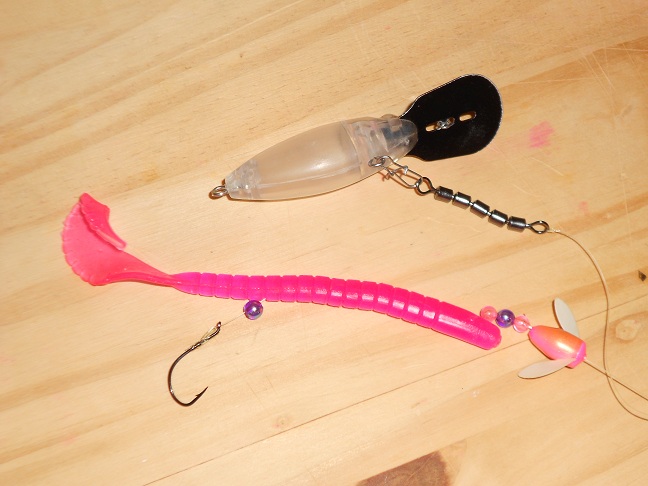
Where can I get rubber worms with metal leaders? I fish up north where the fish have teeth!Thank you, Mike
This is a great site I have fished worms with success but your set ups look great and easy to set up thanks for the info
This article, the pictures and following along on the outdoor line really make clear the rigging you are talking about. Thanks for the info. Mark